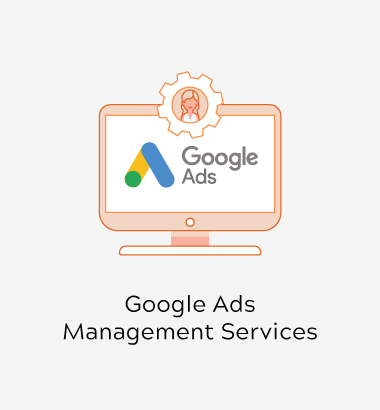Google Ads Services
GOOGLE ADS
“Drive growth and reach your target audience with precision using Google Ads – the ultimate tool for online advertising success.”
PRELUDE
In today’s digital age, online advertising has become an indispensable tool for businesses looking to reach their target audience and drive growth. Among the plethora of advertising platforms available, Google Ads stands out as one of the most powerful and effective solutions. In this comprehensive guide, we’ll delve into the world of Google Ads and explore how businesses can leverage this platform to achieve their marketing goals and drive success. Firstly, Google Ads is an online advertising platform developed by Google. Moreover, it allows businesses to create and display ads on various Google properties. In addition, it operates on a pay-per-click model, where advertisers bid on keywords relevant to their target audience.

Understanding Google Ads
Google Ads, formerly known as Google AdWords, is an online advertising platform developed by Google that allows businesses to display ads on Google’s search results pages and across its extensive network of partner websites. The platform operates on a pay-per-click (PPC) model, where advertisers bid on keywords relevant to their target audience, and pay a fee each time a user clicks on their ad. Understanding the fundamentals of Google Ads is essential for maximizing its potential and achieving optimal results. To begin with, it’s essential to understand how Google Ads works and its key components. Additionally, familiarizing yourself with terms such as keywords, bids, ad groups, and quality score will help you navigate the platform effectively.
Getting Started with Google Ads
Setting up a Google Ads account is the first step towards launching successful advertising campaigns. The process involves creating an account, choosing the right campaign type based on your marketing objectives, setting your budget and bidding strategy, and defining your target audience. Additionally, you’ll need to conduct keyword research to identify relevant keywords to target in your ads, as well as create compelling ad copy and choose appropriate landing pages for your ads. Lastly, following tips for success with Google Ads can help advertisers maximize their results. For example, conducting thorough keyword research and creating compelling ad creatives are essential. Moreover, monitoring campaign performance and staying up-to-date with best practices are equally important.
Setting Up Your Google Ads Account
Next, setting up your Google Ads account is the first step towards running successful campaigns. Moreover, you’ll need to choose the right campaign type, set your budget, and define your target audience to ensure your ads reach the right people. Furthermore, Google Ads offers several benefits to advertisers. For instance, it provides reach, targeting options, and measurable results. Additionally, it offers flexibility and integration with Google Analytics.
Conducting Keyword Research
Equally important, conducting thorough keyword research is crucial for the success of your Google Ads campaigns. Furthermore, identifying relevant keywords with high search volume and low competition will help you optimize your ad targeting and maximize your ROI. Equally important, Google Ads offers various types of ad campaigns to suit different marketing objectives. For example, there are Search campaigns, Display campaigns, and Video campaigns. Similarly, there are also Shopping campaigns and App campaigns.

Optimizing Your Google Ads Campaigns
Once your campaigns are up and running, ongoing optimization is key to maximizing their effectiveness and return on investment (ROI). This involves monitoring your campaigns regularly, analyzing performance data, and making adjustments to improve performance. Optimization strategies may include refining keyword targeting, adjusting bids based on performance, testing different ad creatives, and optimizing landing pages for conversions.Moreover, crafting compelling ad copy that grabs attention and entices users to click is essential for driving engagement and conversions. For example, incorporating persuasive language, highlighting unique selling points, and including a clear call-to-action can improve your ad’s effectiveness.
Benefits of Google Ads
Google Ads allows you to reach a vast audience of potential customers, ensuring maximum visibility for your brand across Google’s extensive network.
With advanced targeting options, you can reach specific audiences based on factors such as location, demographics, interests, and online behavior.
Google Ads provides real-time tracking and measurement of key metrics, allowing you to optimize campaigns for maximum effectiveness and ROI.
Unlike traditional advertising methods, Google Ads can start driving traffic and generating leads or sales immediately, delivering quick and measurable results.
Google Ads offers flexibility in budget, bidding strategy, ad formats, and targeting options, making it suitable for businesses of all sizes and objectives.
Overview of Google Ads

What is Google Ads?
Is an online advertising platform developed by Google that allows businesses to create and display ads on various Google properties, including search results pages, partner websites, YouTube, and more. It operates on a pay-per-click (PPC) model, where advertisers bid on keywords relevant to their target audience and pay a fee each time a user clicks on their ad.

How Does it Work?
It works by allowing advertisers to create ad campaigns, choose their target audience, set their budget and bidding strategy, and create ad creatives. When users search for keywords related to the advertiser's products or services, auction system determines which ads to show based on factors such as ad relevance, bid amount, and quality score.

Benefits
It offers several benefits to advertisers, including reach, targeting options, measurable results, quick results, flexibility, and integration with Google Analytics. These benefits make a powerful and effective platform for driving traffic, generating leads, and increasing sales online.

Types of Campaigns
It offers various types of ad campaigns to suit different marketing objectives, including Search campaigns, Display campaigns, Video campaigns, Shopping campaigns, and App campaigns. Each campaign type has its own set of features and targeting options, allowing advertisers to reach their audience effectively across different channels.

Key Components
The key components include keywords, ad groups, ads, bids, quality score, targeting settings, and ad extensions. Understanding how these components work together is essential for creating and optimizing successful ad campaigns on Google Ads. In addition, understanding the key components of Google Ads is crucial for success. For instance, keywords, ad groups, and bids are essential elements. Moreover, targeting settings and ad extensions play a significant role in campaign performance.

Tips for Success
To succeed with Google Ads, advertisers should focus on conducting thorough keyword research, creating compelling ad creatives, optimizing landing pages for conversions, monitoring campaign performance, testing and iterating on ad variations, and staying up-to-date with best practices and industry trends. By following these tips, advertisers can maximize the effectiveness of their Google Ads campaigns and achieve their marketing goals.
Advanced Strategies for Google Ads Success

Optimizing Landing Pages
To take your campaigns to the next level, consider implementing advanced strategies and tactics. These may include leveraging audience targeting options such as remarketing and custom audiences, utilizing ad extensions to enhance your ads with additional information and features, and experimenting with advanced bidding strategies such as target ROAS (return on ad spend) and target CPA (cost per acquisition). Additionally, integrating with other marketing channels and tools can help amplify your results and drive greater impact.In addition, optimizing your landing pages to align with your ad content and offer a seamless user experience is key to maximizing conversions. Specifically, ensuring fast loading times, clear messaging, and intuitive navigation can reduce bounce rates and increase conversion rates.
Monitoring and Analyzing Performance
Measuring the success of your campaigns is essential for understanding their impact and optimizing performance. Key performance indicators (KPIs) such as click-through rate (CTR), conversion rate, cost per click (CPC), and return on ad spend (ROAS) can provide valuable insights into campaign performance and ROI. By regularly analyzing these metrics and making data-driven decisions, you can ensure that your Google Ads campaigns are delivering the desired results and driving meaningful business outcomes.Furthermore, monitoring and analyzing the performance of your Google Ads campaigns is essential for identifying areas of improvement and optimizing your strategy. For instance, tracking metrics such as click-through rate, conversion rate, and cost per conversion can provide valuable insights into campaign performance.
Conclusion
In conclusion, Google Ads offers businesses a powerful platform to reach their target audience, drive traffic, and increase conversions. To sum up, by understanding how these works, setting up your account effectively, conducting keyword research, creating compelling ad copy, optimizing landing pages, monitoring performance, testing and iterating, leveraging remarketing campaigns, scaling your efforts, and staying up-to-date with updates, businesses can unlock the full potential of this advertising platform and achieve their marketing goals. Additionally, knowing how Google Ads works is fundamental for advertisers. For example, advertisers create ad campaigns, choose their target audience, and set their budget. Subsequently, Google’s ad auction system determines which ads to show based on various factors.Google Ads offers businesses a powerful and versatile platform for reaching their target audience, driving traffic, and generating leads and sales.
